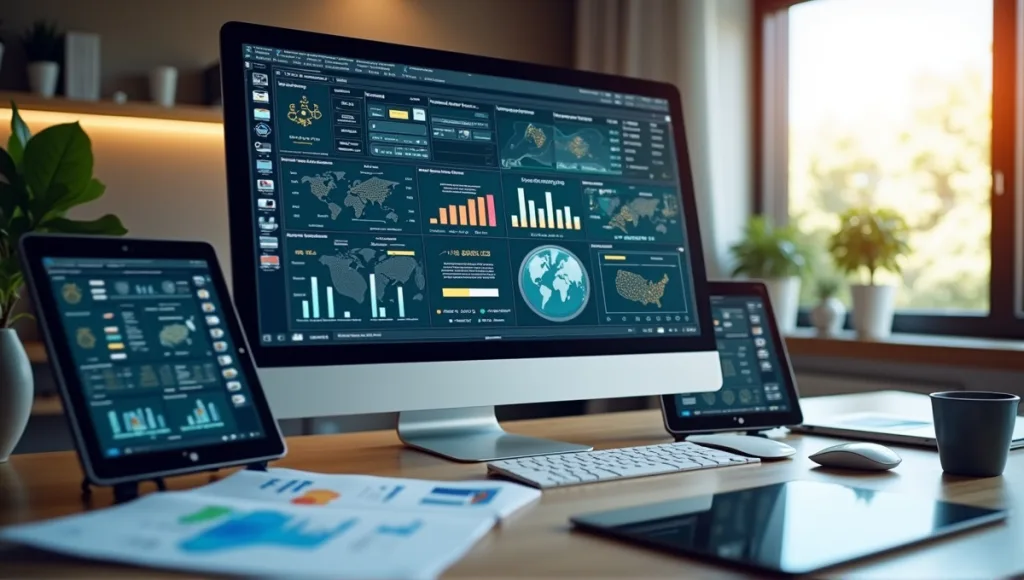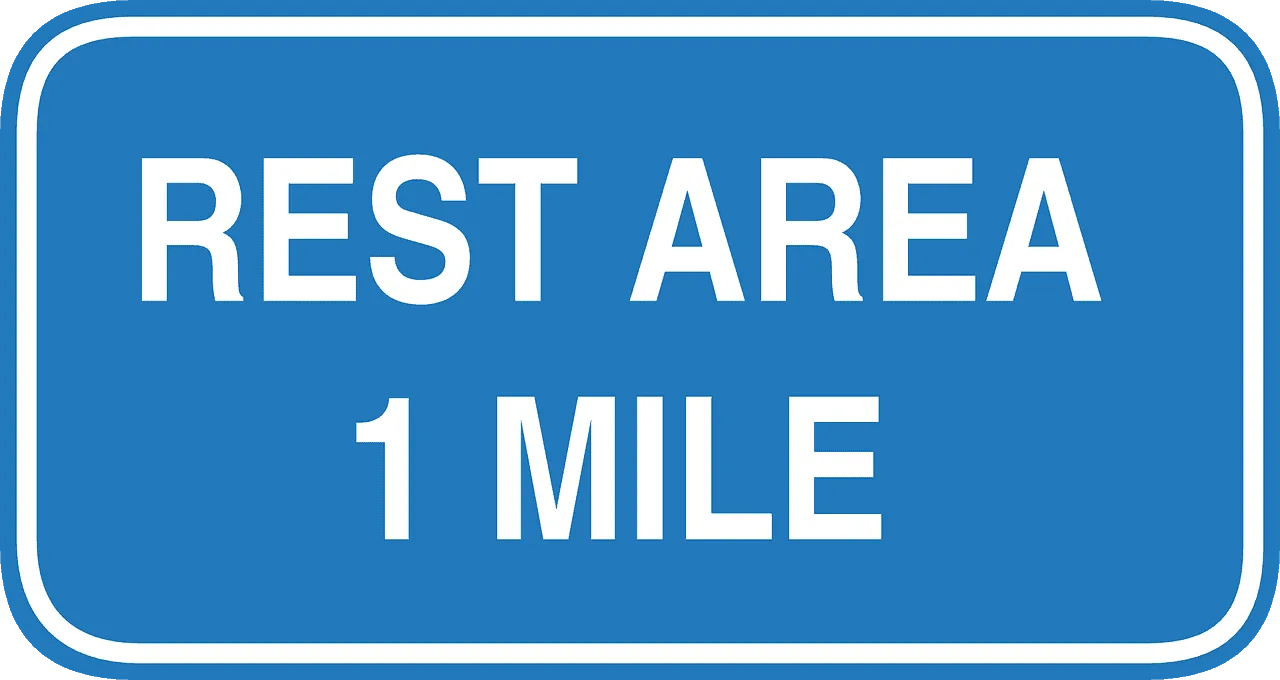Supply chain mapping is an excellent strategy to optimize your business operations. As an industrial engineer who has worked with lean management for many years, I can tell you it’s one of the most impactful things you can do. I’ve personally witnessed it turn around struggling facilities. It’s essentially the process of visually mapping your entire supply chain. This is key to finding inefficiencies, managing risks and optimizing operations.
What is Supply Chain Mapping?
Supply chain mapping is the process of visually illustrating and documenting the complete network of suppliers, manufacturers, distributors, and customers involved in producing a product or service. It’s an invaluable asset that can transform how you optimize your business operations.
The main components of a supply chain map are:
- Suppliers (all tiers)
- Manufacturing facilities
- Distribution centers
- Transportation lanes
- Customers
- Information flows
- Financial flows
There are a variety of supply chain maps:
- Geographic maps
- Process flow diagrams
- Value stream maps
- Network diagrams
- Time-based maps
There are many benefits of supply chain mapping for businesses. You can visualize the entire supply chain to identify bottlenecks, inefficiencies, and potential risks. This insight allows you to make better decisions to reduce costs and make the supply chain more resilient. Supply chain benchmarking can also help you compare your performance against industry standards and identify areas for improvement.
I’ve seen businesses firsthand that, with a detailed supply chain map, were able to identify impacted suppliers within 48 to 72 hours of a disruption. Those without a map often took 3 to 4 weeks to understand the impact of the event. Speed is of the essence to manage risks and prevent disruption to the business.
Importance of Supply Chain Visibility

Supply chain visibility is the ability to track and monitor all activities and events in your supply chain in real time. It’s one of the most important aspects of running a modern business, yet many companies still struggle to achieve it.
An astonishing 55% of companies don’t have full supply chain visibility. Without it, you’ll likely experience:
- Inability to respond to disruptions in a timely manner
- Poor inventory management
- Higher costs
- Poor customer service
However, obtaining full supply chain visibility isn’t straightforward. It requires working with suppliers, collecting a lot of data, and integrating multiple systems. Yet, the benefits of achieving full supply chain visibility far outweigh the effort required to get there.
Complete visibility allows you to make data-driven decisions. You can easily spot and respond to potential disruptions, optimize inventory and increase overall efficiency. Taking a proactive approach to managing your supply chain can significantly reduce risk and give you an advantage over competitors.
In my experience, companies with high supply chain visibility consistently outperform their peers in terms of operational efficiency, customer satisfaction and financial results. This is particularly true when it comes to last-mile logistics, where visibility can greatly improve delivery times and customer satisfaction.
Steps to Create a Supply Chain Map
Mapping out your supply chain requires a structured methodology. Here’s a step by step process to create a supply chain map, based on my experience mapping supply chains over the past few years:
Data collection and preparation: Collect all available information about your supply chain, including details about suppliers, product flows, logistics information, and more.
Identifying key suppliers and stakeholders: Identify key companies involved in your supply chain. This includes not only direct suppliers, but also tier 2 and tier 3 suppliers.
Mapping the physical flow of goods: Create a visual representation of how materials and products physically move through your supply chain, from raw material sources to end customers.
Documenting the flow of information: Create a visual of how data and information move between different entities in your supply chain.
Mapping the flow of finances: Create a visual of the flow of finances between different entities in your supply chain.
Using technology and digital tools: Use any digital tools or technology to improve your supply chain map. Here are some of the tools you can use:
- Geographic Information Systems (GIS)
- Supply chain modeling software
- Data visualization tools
- Blockchain technology
Validating and refining the supply chain map: Share the map with other stakeholders, refine it, and continue iterating on it to reflect changes in the supply chain.
It’s worth mentioning that 72% of manufacturers are investing in digital supply networks, according to Deloitte’s 2021 study on manufacturing trends. This data point emphasizes the increasing role that technology plays in supply chain mapping and management.
Tools and Software for Supply Chain Mapping

There are many tools and software options for supply chain mapping in the market. When evaluating a tool, look for these key features:
- Real-time data integration
- Collaborative capabilities
- Scenario planning functionality
- Risk assessment tools
- Analytics and reporting capabilities
Here’s a comparison of some of the popular mapping solutions:
| Software | Key Features | Integration Capabilities | Price Range |
|---|---|---|---|
| SAP Ariba | Robust supplier management | Extensive ERP integration | High |
| Llamasoft | Advanced optimization algorithms | Good SCM integration | Medium-High |
| Sourcemap | Emphasis on sustainability | Limited, but improving | Medium |
| Descartes | Excellent logistics capabilities | Excellent TMS integration | Medium-High |
When you choose a tool, it should seamlessly integrate with your existing supply chain management software. This integration is important to ensure data consistency and the ability to update your supply chain map in real time. Some tools even offer last mile automation features, which can significantly reduce delivery costs and improve efficiency.
Best Practices in Supply Chain Mapping
Throughout my career, I’ve learned several key best practices that can make your supply chain mapping efforts much more effective:
- Establish clear objectives and scope: Define your objectives for the mapping project and establish scope.
- Ensure data accuracy and reliability: The data quality is key. Put data validation processes in place to ensure the accuracy and reliability of the data.
- Collaborate with suppliers and partners: Involve your suppliers in mapping exercises. Their contributions can reveal very important insights and ensure they’re accurately represented.
- Regularly update and maintain the map: The map is only as good as it is current. Keep it up to date as much as possible as your supply chain will evolve.
- Use standardized symbols and notations: This improves clarity and ensures everyone across various departments understands the map.
- Incorporate sustainability and ethical considerations: Map environmental and ethical implications in addition to supply chain flows.
- Align mapping with business strategy: Make sure that the supply chain map is aligned with broader business strategy.
Just remember that supply chain mapping isn’t a one-time event. It should be a continual process of discovering and optimizing.
Risk Identification and Management through Supply Chain Mapping
Supply chain mapping is a great way to identify and mitigate risks. Here’s how you can use it to do just that:
Identify potential supply chain vulnerabilities: Your map will help you see where you have single points of failure, geographic concentrations of suppliers, or rely too heavily on a single transportation route.
Assess and prioritize risks: Once you’ve identified vulnerabilities, assess their potential impact and the likelihood of them occurring. This will help you prioritize the most important risks.
Develop contingency plans: For each high-risk area on your map, develop a contingency plan. For example, if you have a single supplier that produces a product, identify a backup supplier.
Implement risk mitigation strategies: Use the risk assessments you created above to develop mitigation strategies. For example, if you identified a supplier as high risk, build relationships with backup suppliers.
Monitor and assess risk factors: Continuously monitor the key risk indicators you identified and reassess the vulnerability of certain parts of your map.
Improve supply chain resilience: This step typically includes:
- Finding additional suppliers
- Building more flexibility into your network
- Improving forecasting
- Collaborating more closely with certain partners
In my experience, companies that mapped their supply chains were able to reduce recovery time by 50% when a disruption occurred. This shows how effective supply chain mapping can be for risk management and business continuity. A comprehensive supply chain analysis can further enhance your risk management strategies and overall supply chain performance.
Leveraging Supply Chain Maps for Decision-Making

A carefully designed supply chain map is a treasure trove of insights you can use to make various business decisions:
Optimize inventory management: Find where you have excessive inventory and take steps to streamline inventory levels.
Improve supplier selection and management: Use your map to analyze supplier performance and determine if you need to consolidate or diversify your supplier base.
Enhance logistics and transportation planning: Map your logistics network and identify inefficiencies in logistics and optimal routes.
Find cost-saving opportunities: Identify areas where you have redundancy or waste and can optimize operations to reduce costs.
Make strategic business decisions: Use your map to make decisions about which products to launch, which markets to enter, or whether to integrate vertically.
Support continuous improvement initiatives: Identify where you have bottlenecks and waste, so you can then improve those areas in a projects.
I’ve also seen in my consulting work that companies with deep relationships with suppliers generated 2 to 3 times the TSR of companies that had weaker relationships with suppliers according to McKinsey. If you want to build those deep relationships with your suppliers, a supply chain map will help you deeply understand the role and importance of each supplier in your supply chain.
In Closing
Supply chain mapping is one of the most powerful strategies that businesses can use today. It offers unparalleled insights into your operations, allowing you to identify risks and improve processes. I’ve seen businesses cut recovery time in half by creating detailed supply chain maps. Just remember, it’s not a one-and-done activity.
It requires regular updates and maintenance. With the help of the best tools and following best practices, you’ll be in a strong position to handle future disruptions and scale. The data you collect from supply chain mapping will be incredibly helpful for making strategic decisions and achieving long-term success.





